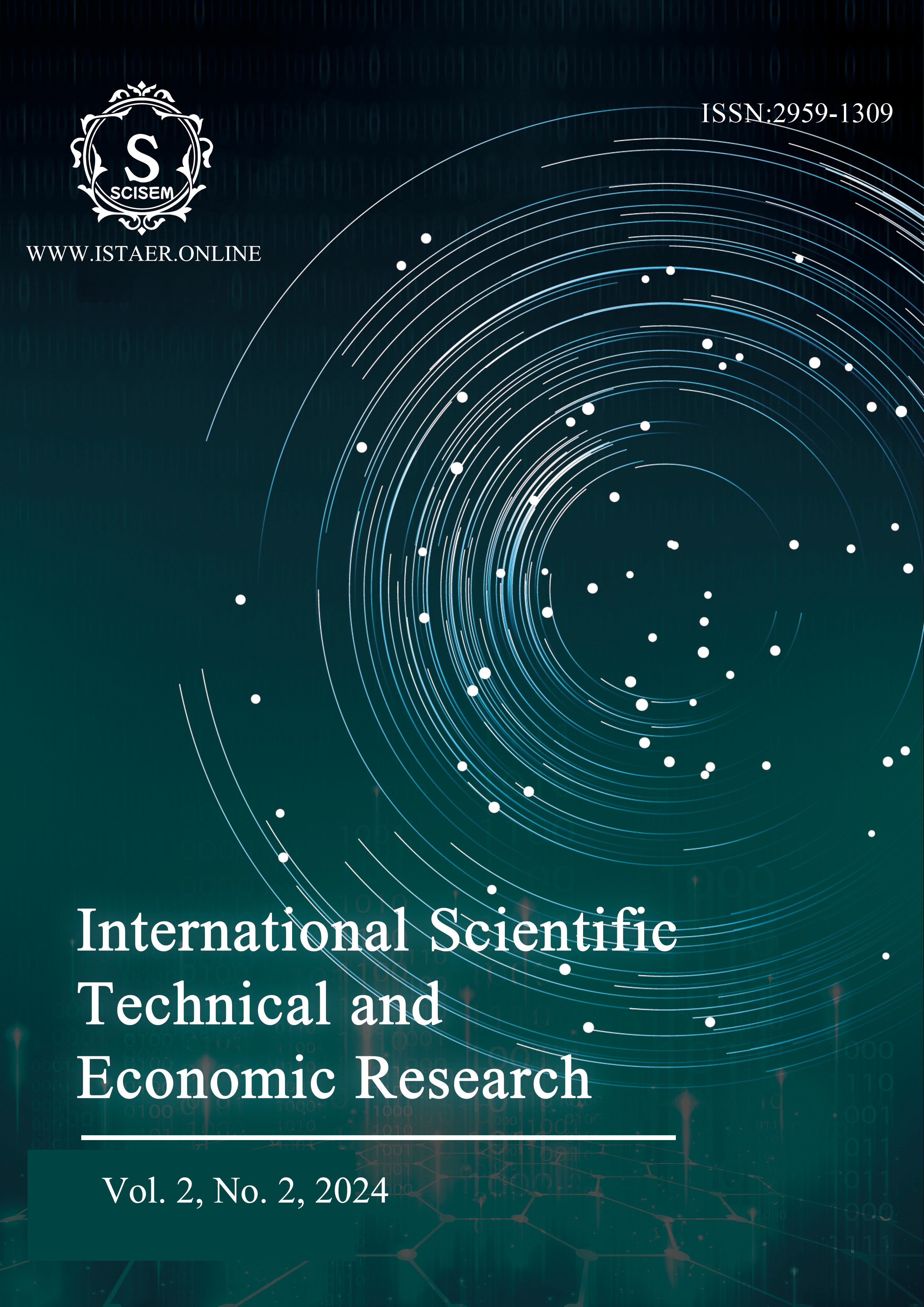An Inquiry into the Impact of Environmental Factors on Financial Markets
Keywords:
Pearson Correlation Analysis; Regression Analysis; Multivariate Time Series Modeling; Python; EviewsAbstract
The purpose of this paper is to study the impact of environmental factors on financial markets in depth by constructing mathematical models. We study and analyze the following four aspects.
Pearson correlation analysis was used to examine the relationship between environmental factors and the overall performance of the stock market. A scatter plot was created to examine the overall correlation, revealing a very weak correlation. Calculating the correlation coefficients between the variables and plotting a heatmap further confirms that the correlation is weak. The results are deemed insignificant by the significance test. In conclusion, there is no significant correlation between environmental factors and overall stock market performance.
The linear regression method is used to analyze the volatility of share prices in the specific energy industry and its influencing factors. The line graph illustrates the fluctuation in stock prices, showing short-term volatility in oil and gas stocks. Data refinement indicates that extreme weather has a minor impact on the oil and gas sector, implying that extreme weather has a limited effect on the energy sector.
The Ordinary Least Squares (OLS) linear regression model was utilized to analyze the linear relationship and correlation between AQI and Oil_Price, as well as between AQI and Gas_Price. The results indicated that the coefficients were insignificant, suggesting no significant linear correlation. The conclusion indicates that the Air Quality Index (AQI) has a lesser impact on the stock price of the energy sector.
A multivariate time series model is utilized to forecast oil and gas prices for the upcoming 20 months, relying on the initial 60 months of data. Firstly, the correlation between variables is analyzed, a smoothness test is performed, the model order is determined, and then tested. The results show that the model is ideal. Forecasting commodity prices for the next 20 months, the results show that oil and natural gas prices are stable with minor fluctuations. The overall prediction is accurate with minor deviations from historical data.
References
[1] Chien, F., Sadiq, M., Kamran, H. W., Nawaz, M. A., Hussain, M. S., & Raza, M. (2021). Co-movement of energy prices and stock market return: environmental wavelet nexus of COVID-19 pandemic from the USA, Europe, and China. Environmental Science and Pollution Research, 28(25), 32359-32373.
[2] Khan, H., Weili, L., & Khan, I. (2022). Institutional quality, financial development and the influence of environmental factors on carbon emissions: evidence from a global perspective. Environmental Science and Pollution Research, 1-13.
[3] Alessi, L., Ossola, E., & Panzica, R. (2021). What greenium matters in the stock market? The role of greenhouse gas emissions and environmental disclosures. Journal of Financial Stability, 54, 100869.
[4] Nasir, M. A., Canh, N. P., & Le, T. N. L. (2021). Environmental degradation & role of financialisation, economic development, industrialisation and trade liberalisation. Journal of environmental management, 277, 111471.
[5] Wang, S., Wang, H., Wang, J., & Yang, F. (2020). Does environmental information disclosure contribute to improve firm financial performance? An examination of the underlying mechanism. Science of the Total Environment, 714, 136855.
[6] Ramelli, S., & Wagner, A. (2020). What the stock market tells us about the consequences of COVID-19. Mitigating the COVID Economic Crisis: Act Fast and Do Whatever, 63(7), 63-76.
[7] Acheampong, A. O., Amponsah, M., & Boateng, E. (2020). Does financial development mitigate carbon emissions? Evidence from heterogeneous financial economies. Energy Economics, 88, 104768.
[8] Wong, J. B., & Zhang, Q. (2022). Stock market reactions to adverse ESG disclosure via media channels. The British Accounting Review, 54(1), 101045.
[9] Guo, M., Kuai, Y., & Liu, X. (2020). Stock market response to environmental policies: Evidence from heavily polluting firms in China. Economic Modelling, 86, 306-316.
[10] Rasheed, R., Rizwan, A., Javed, H., Sharif, F., & Zaidi, A. (2021). Socio-economic and environmental impacts of COVID-19 pandemic in Pakistan—an integrated analysis. Environmental Science and Pollution Research, 28(16), 19926-19943.
*******************Cite this Article*******************
APA:
Zhao, S., Tao, Y., & Yu, H. (2024). An inquiry into the impact of environmental factors on financial markets. International Scientific Technical and Economic Research, 2(2), 40–49. http://www.istaer.online/index.php/Home/article/view/No.2435
GB/T 7714-2015:
Zhao Shuya, Tao Yi, Yu Hao. An inquiry into the impact of environmental factors on financial markets[J]. International Scientific Technical and Economic Research, 2024, 2(2): 40–49. http://www.istaer.online/index.php/Home/article/view/No.2435
MLA:
Zhao, Shuya, Yi Tao, and Hao Yu. "An inquiry into the impact of environmental factors on financial markets." International Scientific Technical and Economic Research, 2.2 (2024): 40-49. http://www.istaer.online/index.php/Home/article/view/No.2435
Downloads
Published
Issue
Section
License
Copyright (c) 2024 International Scientific Technical and Economic Research

This work is licensed under a Creative Commons Attribution-NonCommercial-NoDerivatives 4.0 International License.
This work is licensed under the Creative Commons Attribution International License (CC BY 4.0).




